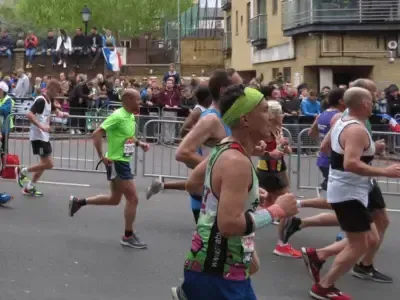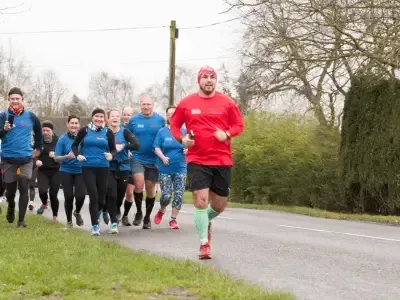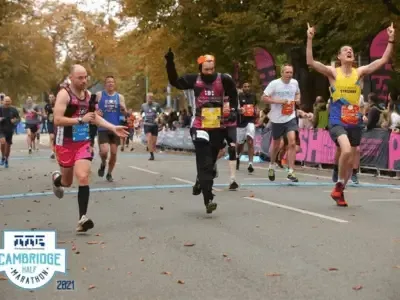Runpreneur Journey Blog
Embark on an extraordinary journey with the Runpreneur community. Discover inspiring stories, insider tips, and the transformative power of our global challenge. From first-time runners to seasoned athletes, our blog captures the essence of the Runpreneur movement, inspiring others to join the cause.

The Monotony of Injuries and How to Manage Them
The Monotony of Injuries and How to Manage Them
Hello everyone,
Today, I wanted to share my thoughts on a topic that many of us, particularly those involved in endurance sports, can relate to all too well: the monotony of injuries and how they can affect us mentally and physically.
As an endurance runner, injuries are something that I've come to see as part and parcel of the game. Whether you're a seasoned athlete or someone just getting into the swing of things, those little niggling injuries can become frustratingly monotonous and often more mentally draining than physically.
Currently, I'm running at a significantly slower pace than usual - about 6 minutes 20 seconds per kilometer. The reason for this is a cocktail of activities from the previous day. After refereeing two football matches, attending a rather exhausting kids' party at an assault course, and getting some running in, I ended up getting unintentionally studded on the Achilles by an opposing player. There is significant bruising, and each stride sends a pulsating pain up my calf muscle. I'm hopeful that there is no ligament, tendon, or muscle damage, but it's painful and frustrating nonetheless.
This latest injury is just another one to add to the list. Not long ago, I was battling plantar fasciitis and blistering issues from the Loch Ness marathon. Just when I feel like I'm gaining momentum, another setback occurs. Even though I'm not currently training for any specific event, knowing that marathon training season is around the corner adds another layer of pressure.
So, what can we do when faced with these setbacks? For me, the key has been maintaining my run streak. By slowing down my pace to a recovery pace - which for me is that 6 minutes 20 seconds per kilometer mark - I'm able to keep moving without over-exerting myself. At this pace, running becomes almost like dynamic stretching, constantly sending oxygenated blood through the muscles to aid and speed up the recovery process.
However, it's crucial to ensure that you aren't pushing yourself too hard. Over-exertion can lead to further damage. Finding that sweet spot of a recovery pace - for me, uncomfortably slow but beneficial - means getting the maximum recovery benefit with minimal risk of additional injury.
Managing injuries is integral to any sport or exercise regime. If you can go through an entire athletic career without facing an injury, it's akin to winning the lottery - incredibly rare. More often, it's about how we manage these injuries and incorporate recovery into our training schedules. Yes, setbacks are inevitable, but by finding a recovery routine that works for you, the impact can be minimized.
For those of you who have to keep training, even in the face of niggling injuries, incorporating recovery training is essential. While complete rest can be one of the best ways to recover, it's not always feasible for everyone. Adopting a slower pace or finding an alternative recovery exercise can make a significant difference in speeding up your healing process.
To all of you out there battling those endless little injuries, I hope my insights help. If you have any questions or comments, feel free to drop me a line - I respond to everyone.
Lastly, if you believe in my mission of saving the lives of children by attempting the ultimate ultra marathon - vlogging every day and running the distance of the world's circumference barefoot - please subscribe, share, like, and comment on my content. The more people we reach, the more money we can raise, and the more children's lives we can save. That's what drives me to show up every single day.
Stay positive, stay happy, and I'll see you again tomorrow.
Best, Kevin Brittain

Kevin's 40,075km Challenge: Raising £1 Million for Children
Meet Kevin, a dedicated Runpreneur who embarked on an extraordinary journey to raise £1 million for children in need. Over the course of his 40,075km challenge, Kevin's unwavering determination and passion inspired thousands to join the Runpreneur movement.

Runpreneur Vlogging: Capturing Kevin's Journey
Experience the Runpreneur challenge through the lens of Kevin's video diary. Witness his ups and downs, the camaraderie of the community, and the transformative power of running for a cause. Dive into the visual stories that capture the essence of the Runpreneur movement.

Empowering Children, One Step at a Time
As Kevin logged every kilometre of his 40,075km challenge, the true purpose behind his journey came into focus. Each step, each bead of sweat, fuelled essential healthcare, education, and nutrition programs for children in need around the world.

The Transformative 4x4x48 Challenge
Experience the thrill and personal growth of our iconic 48-hour running event. Witness the determination and resilience of Runpreneurs as they push their limits, one mile at a time.

Runpreneur Vlogging: Capturing the Journey
Dive into the visual stories of our Runpreneurs as they document their experiences through engaging video logs. Witness the challenges, triumphs, and moments of camaraderie that define the Runpreneur spirit.





















